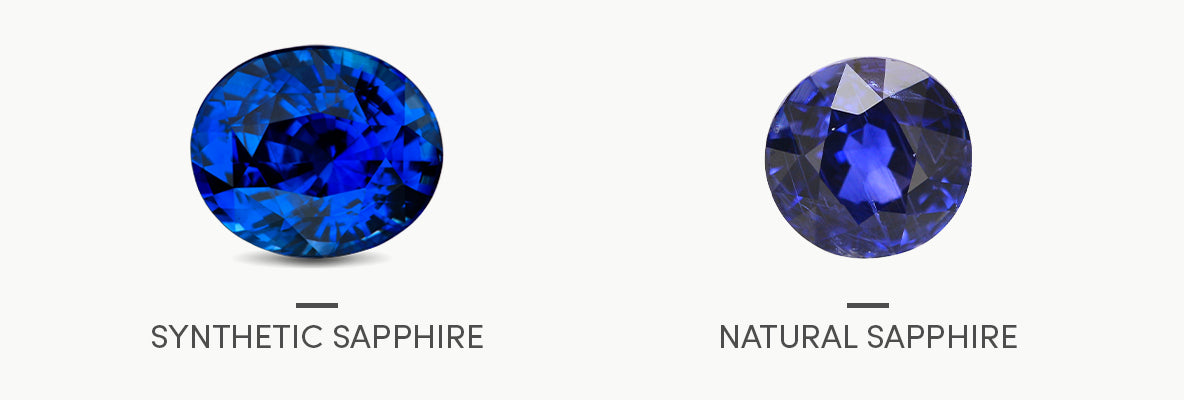How Sapphires Are Valued

Sapphires are the most valuable and rarest blue colored natural gemstones. They are a highly desirable gemstone due to their beautiful royal blue color, hardness (second only to diamonds), durability, and luster (sparkle from light performance within the gemstone). In the gem industry, sapphire without any color prefix (such as blue sapphire) refers to the blue variety of the mineral Corundum. However, the term Sapphire encompasses all other gem varieties and colors of Corundum as well, except Ruby which is the red variety of Corundum, which has its own name.
TABLE OF CONTENTS
Lab created Sapphire corundum is a synthetically produced crystal whose with hardness on the Mohs scale that is second to diamond, making it extremely durable. Durability is important because gemstones are susceptible to chipping. It typically grows in cylindrical sticks called boules, and requires a slow, expensive and energy-intensive production process.
Color is the most important attribute of a sapphire. The closer a sapphire is pure blue the better, but saturation is also important. The top sapphires reach vivid saturation (pure royal blue) as most of the gems on the market are grayish. The tone is another important consideration. Dark sapphires are much in the market but they never reach very high values.

Sapphire Pricing
The most valuable attribute of Sapphire is the cornflower blue color, known as Kashmir Sapphire or Cornflower Blue Sapphire.

Another valuable Sapphire type is the very scarce, orange-pink Padparadscha. An exotic type of sapphire also called the Color Changing Sapphire, displays different colors depending on its lighting. In natural light, this color-changing Sapphire turns blue, but in artificial light, it displays a violet color. However, the yellow and pink Sapphire have become very popular, and are now often seen in jewelry.

Sapphires can range in price depending on the price. The price of some Sapphires ranges from $25 per carat to over $11,000 per carat. The most expensive sapphire was sold on record costing $135,000 per carat. The price of a sapphire is determined based on its quality, which means that a large, low-quality sapphire would be a lot cheaper than a small but very high-quality sapphire.
Blue sapphires usually have some inclusions, but generally have better clarity than rubies. Several types of inclusions can be found in various sapphires. An example of this is the long thin mineral inclusions called needles. They typically also will have feathers or white, cloudy lines inside that can make the sapphire look opaque. It is very rare to find blue sapphires with extremely high clarity, making them very valuable. The price goes up with rarity.
The most highly prized sapphires come from Kashmir. In the Himalaya mountain tops, these precious stones can only be mined a few months in the year. They possess beautiful coloration, but what sets them apart from the rest is their very fine silk. This causes the stone to have a velvety textured appearance. It creates a glow that minimizes extinction at the same time. This effect can only be seen in the Burmese ruby.
What Makes Sapphires Expensive
Sapphires are available in a wide range of colors and sizes, the price ranges starting from a few dollars for heavily included midnight blues. The most expensive colors are the highly saturated blues, the intensive pinks, and the padparadscha colors. The reason blue sapphires have always come with the highest prices is also related to their large sizes. A pink or a padparadscha can only fetch prices in a similar range if they weigh over 100 carats, but the existence of stones like that with exceptional color and clarity is very rare.
Color and size or weight are the most important factors in determining the price of a sapphire. Beyond the color, clarity, and cut details need to be assessed. A sapphire stone can always be re-cut, so clarity is probably more important.
A top quality 1 to 2 carat stone might retail for prices between $800 - $1200 per carat. While quality 2 to 3 carat stones would sell for approximately double the price per carat, so that would be around $1600 - $2000 per carat. For larger or smaller stones, however, prices can be extrapolated to some extent but, there is no linear or exponential formula to follow and prices change with time.
Pricing Synthetic vs. Natural
Synthetic gemstones like the sapphires cano be identified and differentiated from natural gemstones because they are too perfect. This means that the quality is too high. Despite the synthetic gemstones being vastly superior in appearance due to the lack of impurities, they often sell for lower prices when compared to other natural gemstones. The sapphire, however, is of the highest quality and a very rare gemstone to come by. Therefore, this makes it an expensive one.
Getting a well-cut, high-quality carat sapphire would cost more than other gemstones since a quality sapphire is made to the very best value and is a very rare gemstone which makes the demand high and increases the price.

FAQs
Do sapphires hold their value over time?
Yes, sapphires do hold their value over time; just ensure to opt for a high-quality grade natural sapphire with an intense hue.
What is the value of a lab created sapphire?
A lab created sapphire will sell for a lower price compared to a natural sapphire, and usually costs approximately $40 per carat.
How is the value of a sapphire assessed?
The value of a sapphire is assessed based on its color, cut, clarity and carat weight. Out of these, color is the most important factor. High-quality sapphires display a strong to vibrant color saturation.
What is the rarest type of sapphire?









